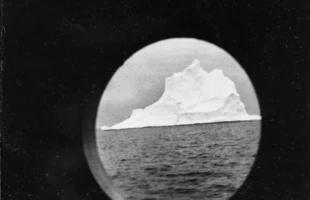World War II – Fleet in Action

Arctic Convoys

Scapa Flow’s role as a major naval base was restored during WW2. As the Royal Navy’s main fleet anchorage it was arguably the single most important expanse of water in Europe, facing a German enemy across the North Atlantic and the North Sea. Its strategic location enabled the fleet to patrol these waters, engage enemy vessels and carry out convoy escort duties.

When Russia was invaded by Germany in June 1941, Winston Churchill authorised naval convoys to Russia heralding a period of unique collaboration between the two countries. Between August 1941 and May 1945, the Arctic Convoys delivered more than four million tons of vital military supplies across treacherous, often freezing seas. Tanks, fighter planes, fuel, ammunition, raw materials and food were shipped to the Soviet Union’s northern ports of Archangel and Murmansk.
The convoys were escorted by Royal Navy destroyers, corvettes, trawlers and minesweepers from Scapa Flow, as well as warships from the United States and Canada. In some cases aircraft carriers provided air cover, while large battleships gave some protection on the voyage. The brutal Arctic conditions tested the sailors’ strength and morale.
The convoys constantly ran the risk of attacks from large German battleships. The battlecruiser Scharnhorst was stationed at the North Cape in the far north of Norway, while, slightly further to the south, lay the huge battleship Tirpitz. Both these ships posed a considerable threat before they were eventually sunk.
The Battle of the North Cape
On Christmas Day 1943, the German battlecruiser, Scharnhorst, along with five destroyers, set out to attack the Arctic convoy, JW55B.
The British knew the ships’ positions. The battleship HMS Duke of York, the cruiser HMS Jamaica, and four destroyers were heading north to intercept, whilst the cruisers HMS Belfast, HMS Norfolk, and HMS Sheffield, were heading from the east.
The Scharnhorst split from the escorting destroyers, and, on the morning of 26 December, she was attacked by the three cruisers. Shots were exchanged, and the Scharnhorst suffered a hit which destroyed the forward radar.

Sailing blind, Scharnhorst turned south and sailed at top speed to escape the cruisers’ fire, straight towards HMS Duke of York. She was sunk with the loss of all but 36 of her crew of 1,700. This was the last major flee action of the war, and it is known as the Battle of the North Cape.

Scapa Flow Museum is currently closed for a major refurbishment project, funded by Orkney Islands Council, National Lottery Heritage Fund, Historic Environment Scotland, Highlands and Islands Enterprise, Museums Galleries Scotland, Scottish Natural Heritage and the Orkney LEADER fund. The project includes carrying out essential repairs to Pumphouse No. 1 and building an extension to house a new gallery, visitor facilities and café.
Visitors can virtually explore the buildings and former exhibitions at www.hoydrone.com/museum, a 3600 photo record of the main site museum site.
The Island of Hoy Development Trust website www.hoyorkney.com has a large Wartime Heritage section focusing on the WW2 history of Hoy.












